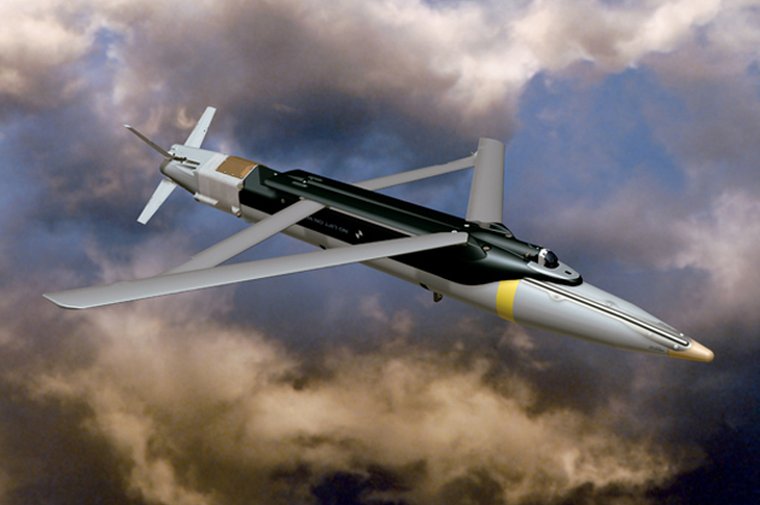[SIZE=5][CENTER]قامت شركة BOEING بتعديل قنابل الSDB ( قنابل القطر الصغير ) لإطلاقها من منصات أرضية لسد الفراغ لدى القوات الأرضية من ناحية القذائف الدقيقة بعيدة المدى !!
سيشمل تعديل بوينق إضافة محرك صاروخي يسمح للقنبلة بالطيران لإرتفاع وسرعة مناسبة ومن ثم تقوم القنبلة بنشر أجنحتها ومن ثم الإنزلاق للهدف المراد تدميره !!

Boeing is moving forward with development of the ground-launched variant of its Small Diameter Bomb (SDB), which it believes fills a gap for long-range precision fires.
The company is modifying the Ground-Launched SDB so it can be operated from systems such as the M270 Multiple Launch Rocket System (MLRS), using a rocket motor to gain enough altitude and speed to deploy its wings and glide to the designated target.
Jeff Ayers, Boeing director of cruise missile systems, said the variant was attracting early interest from potential customers and the company was looking to carry out a demonstration next year.
‘One of the concepts we have been working in the weapons factory is taking a booster and applying it to SDB. It is a really fascinating capability - whereas typical MLRS systems follow a ballistic trajectory, in this particular case you are launching an SDB to the altitude you want and then you can fly a trajectory to the target,’ Ayers said.
The company has already delivered more than 11,000 GBU-39B SDB units across five international customers, with Ayers noting it had been integrated on the F-15, F-22 and AC-130W while work was underway to qualify the weapon on the F-35, Gripen and Tornado.
While the SDB made its combat debut in Afghanistan from a USAF F-15E back in 2007, the potential to develop it into a land-based guided weapon has apparently attracted considerable attention from various armies since being announced by the company in October 2012.
‘There is a lot of dialogue going on with potential customers about this as it is an exciting capability and so different from any capability that is out there today,’ Ayers explained.
‘We have the ability to move really fast. The work that has been done to date is wind tunnel work as we have been studying the shorter fairing on there but the truth is that may not even be required. So we have gone to the wind tunnel to see how it can fly from a ground-launched perspective.’
سيشمل تعديل بوينق إضافة محرك صاروخي يسمح للقنبلة بالطيران لإرتفاع وسرعة مناسبة ومن ثم تقوم القنبلة بنشر أجنحتها ومن ثم الإنزلاق للهدف المراد تدميره !!

Boeing is moving forward with development of the ground-launched variant of its Small Diameter Bomb (SDB), which it believes fills a gap for long-range precision fires.
The company is modifying the Ground-Launched SDB so it can be operated from systems such as the M270 Multiple Launch Rocket System (MLRS), using a rocket motor to gain enough altitude and speed to deploy its wings and glide to the designated target.
Jeff Ayers, Boeing director of cruise missile systems, said the variant was attracting early interest from potential customers and the company was looking to carry out a demonstration next year.
‘One of the concepts we have been working in the weapons factory is taking a booster and applying it to SDB. It is a really fascinating capability - whereas typical MLRS systems follow a ballistic trajectory, in this particular case you are launching an SDB to the altitude you want and then you can fly a trajectory to the target,’ Ayers said.
The company has already delivered more than 11,000 GBU-39B SDB units across five international customers, with Ayers noting it had been integrated on the F-15, F-22 and AC-130W while work was underway to qualify the weapon on the F-35, Gripen and Tornado.
While the SDB made its combat debut in Afghanistan from a USAF F-15E back in 2007, the potential to develop it into a land-based guided weapon has apparently attracted considerable attention from various armies since being announced by the company in October 2012.
‘There is a lot of dialogue going on with potential customers about this as it is an exciting capability and so different from any capability that is out there today,’ Ayers explained.
‘We have the ability to move really fast. The work that has been done to date is wind tunnel work as we have been studying the shorter fairing on there but the truth is that may not even be required. So we have gone to the wind tunnel to see how it can fly from a ground-launched perspective.’




Comment